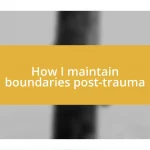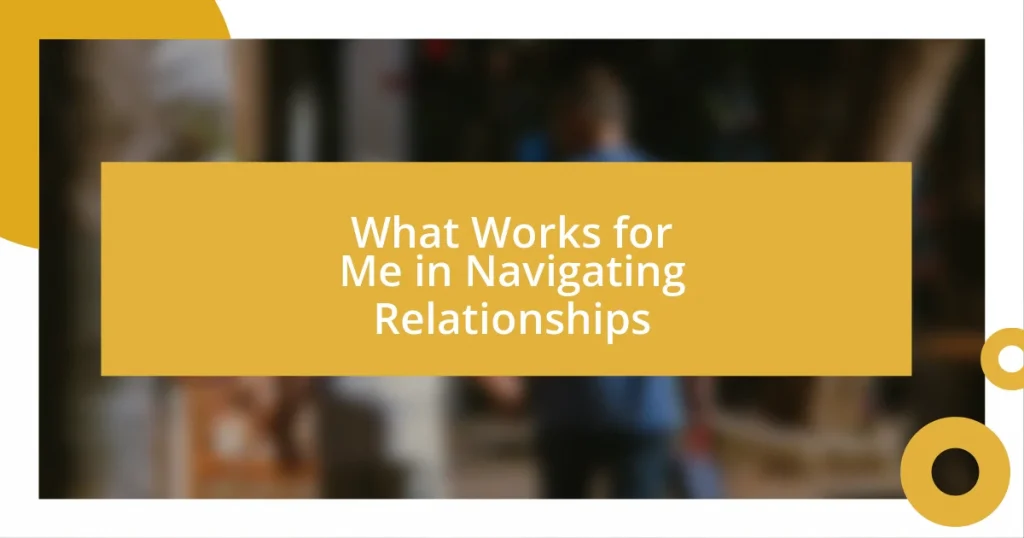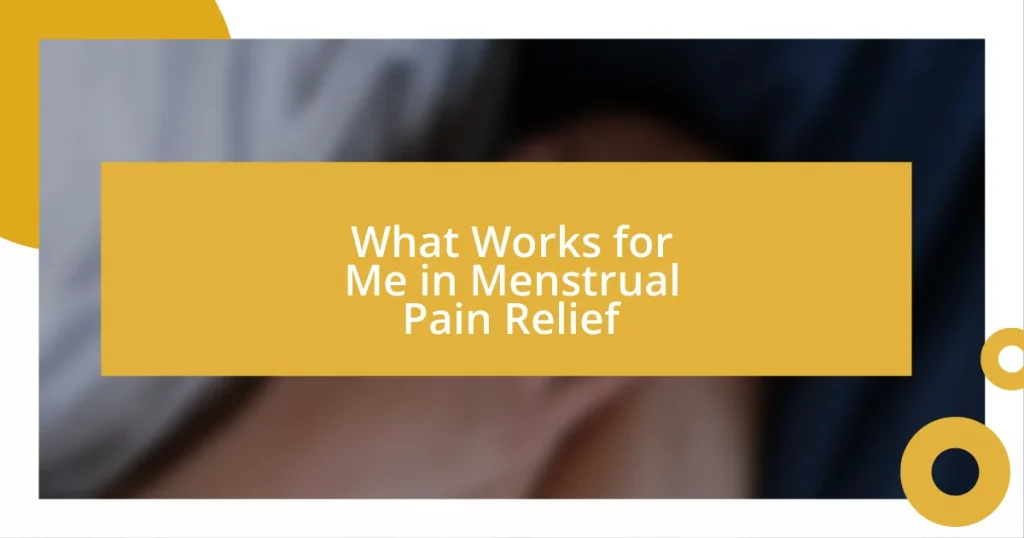Key takeaways:
- Recognizing and understanding personal triggers and flashback patterns is essential for managing flashbacks and fostering emotional resilience.
- Grounding techniques, such as the “5-4-3-2-1” method and mindfulness practices, can effectively help individuals stay present during distressing moments.
- Building a supportive network of friends, family, and professionals is crucial for navigating the challenges of flashbacks and finding healing through shared experiences.
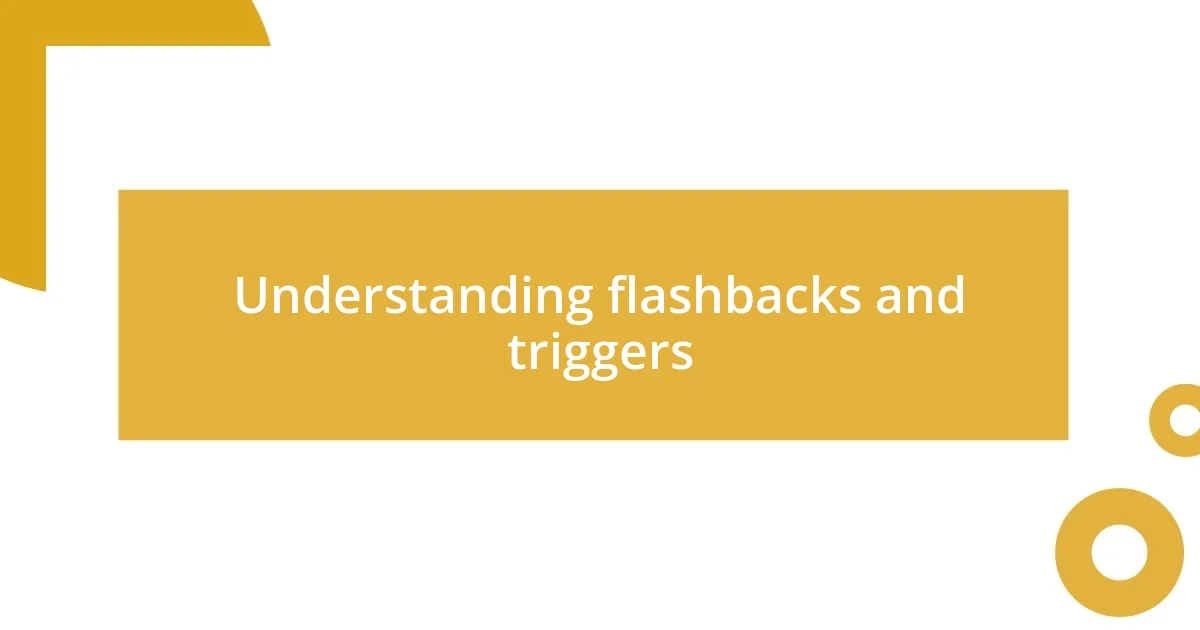
Understanding flashbacks and triggers
Flashbacks can feel like a sudden jolt back to a traumatic moment, where sights, sounds, and feelings surge back with intense clarity. I remember sitting on my couch one evening when the faint sound of thunder transported me to a stormy night from my past that was anything but comforting. Isn’t it astounding how a mere sound can unravel years of progress in a split second?
Triggers often lurk in the most unexpected places, reminding us that our experiences echo long after the initial event. For me, the smell of certain colognes can evoke memories of someone I deeply lost. Have you ever caught a scent and found yourself lost in a memory, flooded with emotions you thought you had put to rest?
It’s crucial to understand that triggers vary widely from person to person. While one person might flinch at a crowded room, another might be thrown off by an innocuous phrase. Reflecting on my experiences, I’ve learned that recognizing these triggers is a vital step toward managing flashbacks. Isn’t it empowering to know that awareness can be a key to reclaiming our peace?
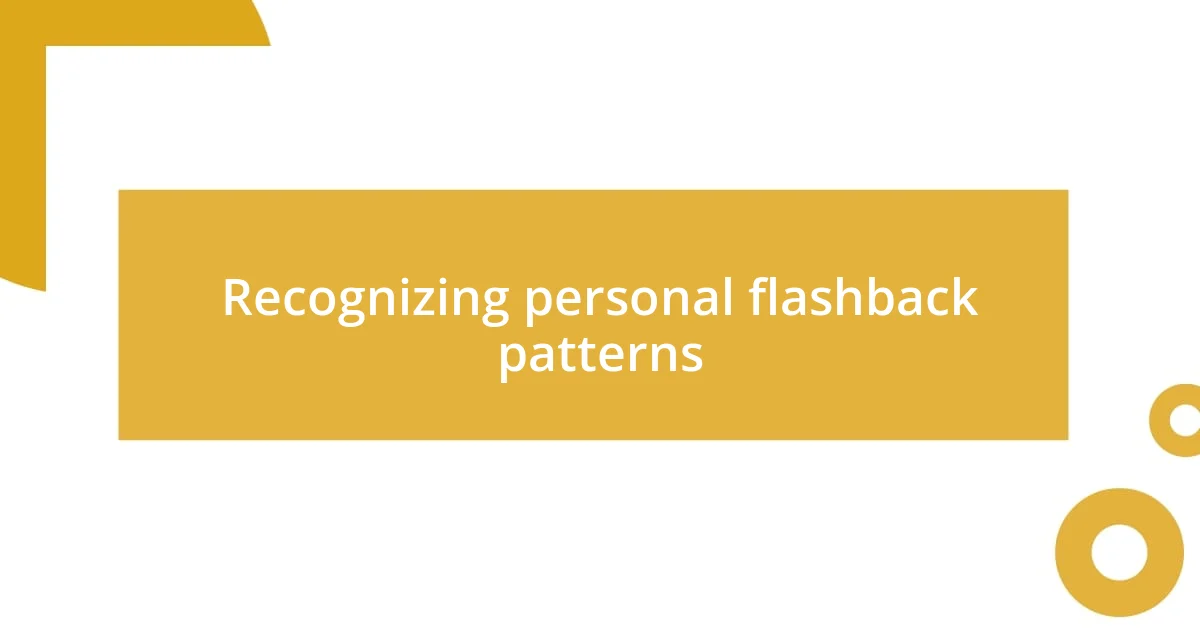
Recognizing personal flashback patterns
Recognizing personal flashback patterns has been an enlightening journey for me. I’ve discovered that these patterns often follow a rhythm, showing up when I’m stressed or overwhelmed. It took time for me to connect the dots, but now I notice subtle cues—like a tightness in my chest—that signal an impending flashback. I remember one particularly hectic day at work when the bright fluorescent lights felt suffocating, and suddenly, I was back at a hospital, recalling moments I wished to forget. Identifying these patterns creates a framework for understanding my reactions.
To make this recognition easier, I’ve created a mental checklist for the signs and circumstances leading to flashbacks:
- Increased heart rate or shallow breathing
- Specific visual cues, like certain colors or shapes
- Distinct sounds, such as ringing phones or laughter
- Feelings of isolation or heightened anxiety
- Physical sensations, like tension in my shoulders
By pinpointing these elements in my life, I feel more equipped to navigate the challenges that arise. Remember, each of us has our unique landscape of triggers; taking the time to explore and understand yours can pave the way towards greater emotional resilience.
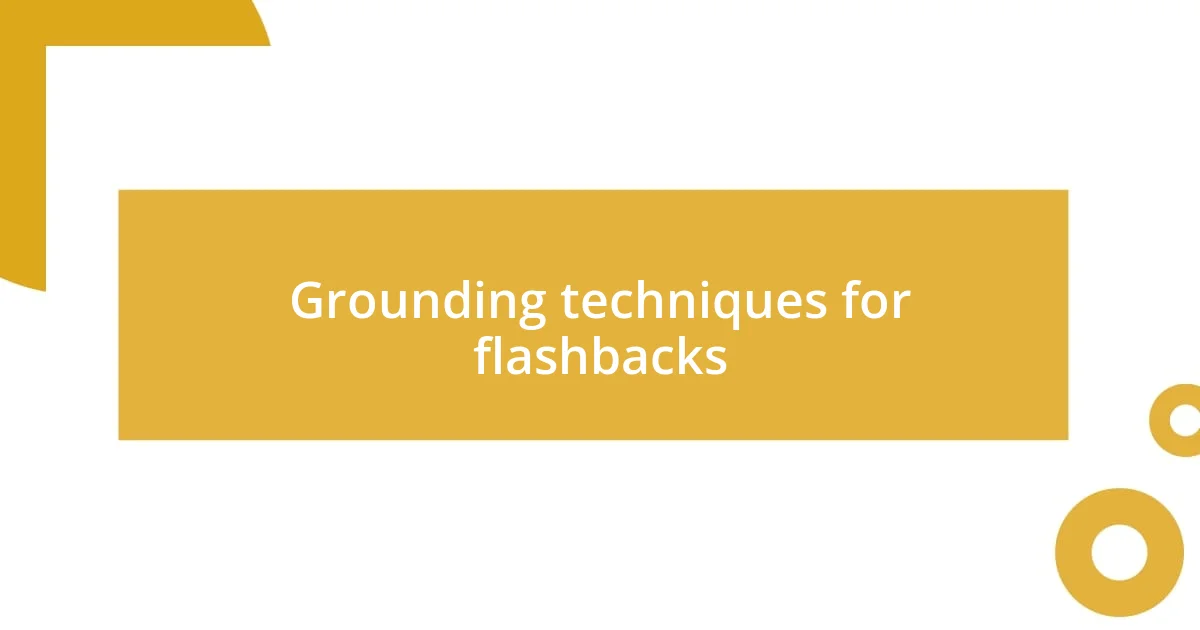
Grounding techniques for flashbacks
Grounding techniques can be incredibly effective for managing flashbacks. One of my go-to methods is the “5-4-3-2-1” technique, where I take a moment to identify five things I can see, four things I can touch, three things I can hear, two things I can smell, and one thing I can taste. This exercise brings me back into the present moment and helps sever the ties to the past. I remember one time at a coffee shop, overwhelmed by my environment, focusing on the aroma of freshly brewed coffee really helped ground me.
Another technique that has served me well is using physical objects to anchor my thoughts. For instance, I often carry a smooth stone in my pocket. When I start feeling unmoored, I take it out and focus on its weight and texture. This simple action reminds me of the present and allows feelings of calm to wash over me. Isn’t it fascinating how a small object can hold so much power over our emotions?
Breathing exercises can also play a crucial role in my coping strategy. I practice deep, controlled breaths, inhaling for a count of four, holding for four, and exhaling for four. While this might seem basic, I find that focusing on my breath can significantly reduce anxiety and help dissolve feelings associated with flashbacks. I once sat in my car during a particularly stressful day, and by simply centering my breath, I could shift my mental landscape entirely.
| Grounding Technique | Description |
|---|---|
| 5-4-3-2-1 Method | Identifying five sights, four touches, three sounds, two smells, and one taste to establish presence. |
| Physical Object | Using a small object, like a stone, to focus on its texture and weight for grounding. |
| Breathing Exercises | Engaging in deep breathing patterns to calm anxiety and reorient thoughts. |
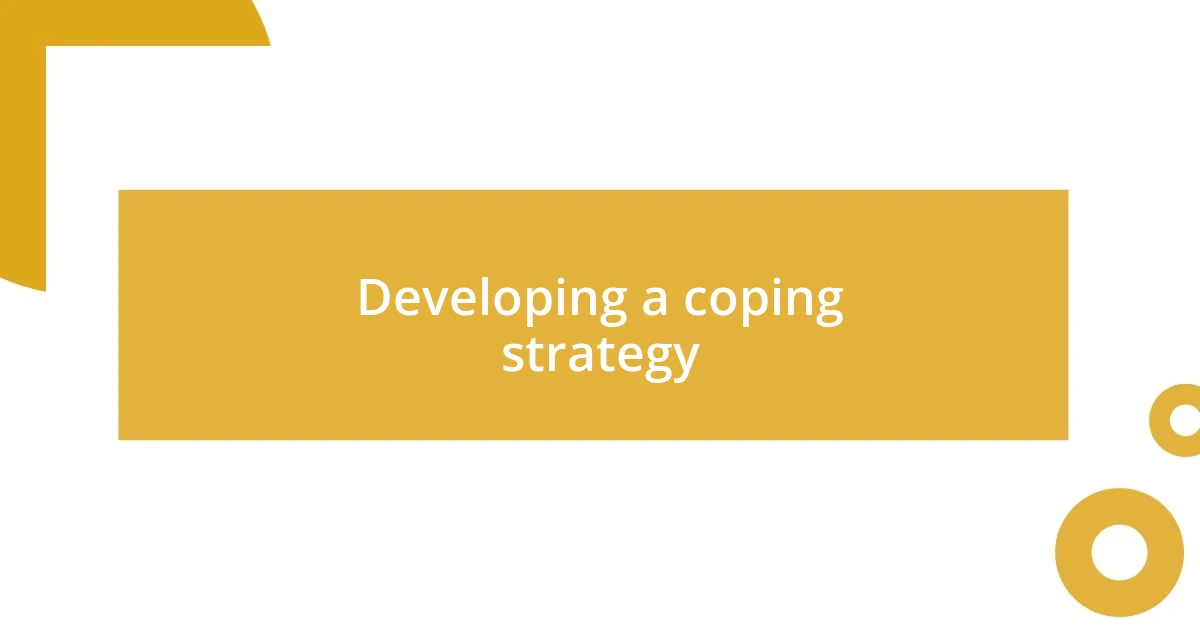
Developing a coping strategy
Developing a coping strategy is essential for anyone dealing with flashbacks, and I’ve found it immensely helpful to create a personalized plan tailored to my experiences. When I started down this path, I wrote down everything I felt was important—what triggered my flashbacks and how I typically reacted. I realized that knowing my triggers allowed me to anticipate moments of distress, giving me a sense of control that I previously lacked. Have you thought about what your triggers could be?
A key part of my strategy is incorporating a self-soothing routine. For me, that includes a combination of movement, like gentle stretches and deep breathing, along with a playlist of calming music. It’s incredible how much a familiar song can anchor me in a moment of chaos. I remember one particularly stormy evening when the rain echoed my emotions. I turned on a soothing album, closed my eyes, and felt my body begin to relax, reminding me that music could truly be a refuge in turbulent times.
Sharing my experiences with trusted friends and family has also been pivotal in my coping strategy. I often wonder how much lighter I feel after an open conversation about my flashbacks. One evening, while chatting with a close friend over dinner, I realized how sharing my story allowed me to reclaim parts of myself that felt lost. The validation I received created a safe space for healing, and this experience reinforced the importance of connection in navigating life’s challenges. Isn’t it powerful to think that our vulnerabilities can attract support and understanding from others?

Utilizing mindfulness and meditation
Mindfulness and meditation have been game changers in my journey to cope with flashbacks. I remember the first time I truly committed to a daily meditation practice; it felt like opening a door to a peaceful sanctuary within myself. Each session allowed me to gain perspective on my thoughts and emotions, creating a mental space where I could observe rather than react. Have you ever tried sitting in silence and simply noticing your breath? It can be surprisingly grounding.
On days when flashbacks feel overwhelming, I turn to guided meditations that focus on safety and calmness. One particular guided session led by a calming voice took me through visualizations of serene landscapes, which pulled me away from distressing memories. As I immersed myself in these vivid mental images, I felt the tension in my body begin to melt away. It’s almost magical how visualization can shift your mental state; have you ever explored this in your practice?
Incorporating mindfulness into my day-to-day activities has made a significant difference too. Simple tasks, like washing dishes or going for a walk, transform into meditative experiences when I consciously pay attention to each movement and sensation. I cherish those moments of presence, where I can connect fully with my surroundings. How much richer do our experiences become when we savor each moment? I find that these small practices serve as vital reminders that I’m not bound by my past, but rather, I have the power to shape my present.
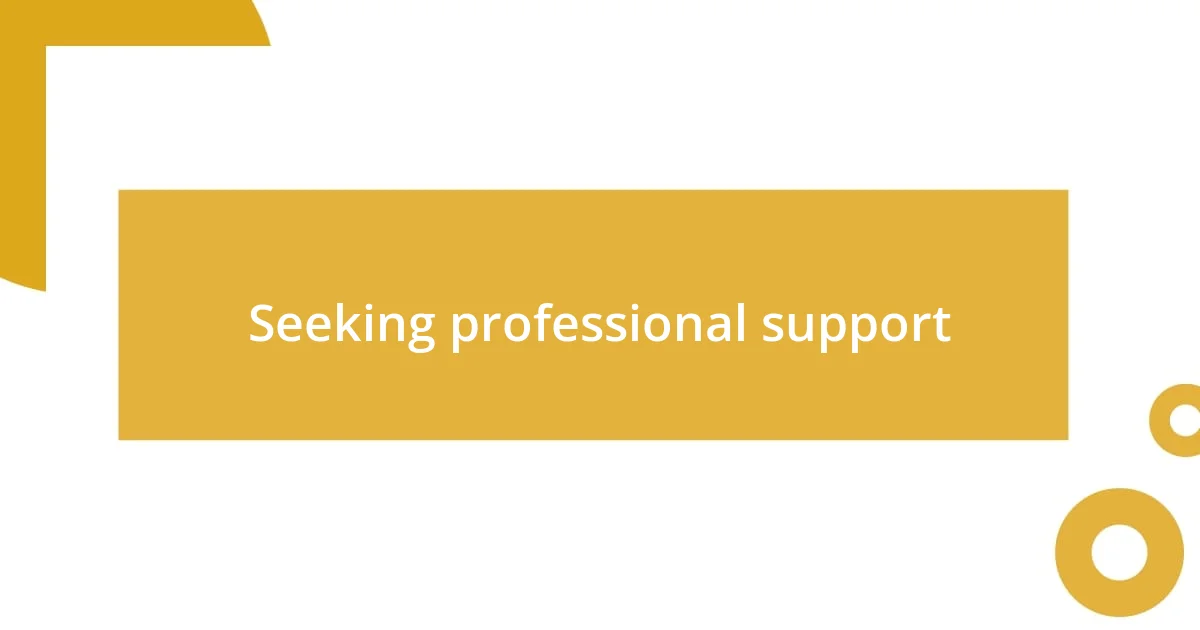
Seeking professional support
Seeking professional support has been an essential step in my journey with flashbacks. I remember the first time I sat in a therapist’s office, feeling a mix of hope and apprehension. It was there that I learned how to articulate my experiences, which was a profound breakthrough. Have you ever felt the strain of keeping everything inside? I certainly have, and sharing my thoughts with a trained professional created a space for understanding and healing.
Finding the right therapist took some time, but the search was worthwhile. I can’t stress enough how important it is to feel comfortable with someone who truly listens. During one of my sessions, my therapist introduced me to cognitive-behavioral therapy (CBT), which helped me challenge and reframe my thinking patterns around flashbacks. It’s fascinating how a few sessions can shift your perspective, don’t you think? Being able to distinguish my thoughts from reality has empowered me to confront my flashbacks with confidence.
In addition, group therapy provided a sense of camaraderie that I hadn’t anticipated. Sitting in a circle with others who share similar struggles made it clear that I was not alone. One evening, I was struck by the stories of resilience shared by my peers; their courage to confront their past inspired me to voice my own story more openly. It’s amazing how healing can occur in community. What if reaching out for professional support is the first step toward reclaiming our narratives? I believe that support makes navigating these challenging waters a little less daunting.
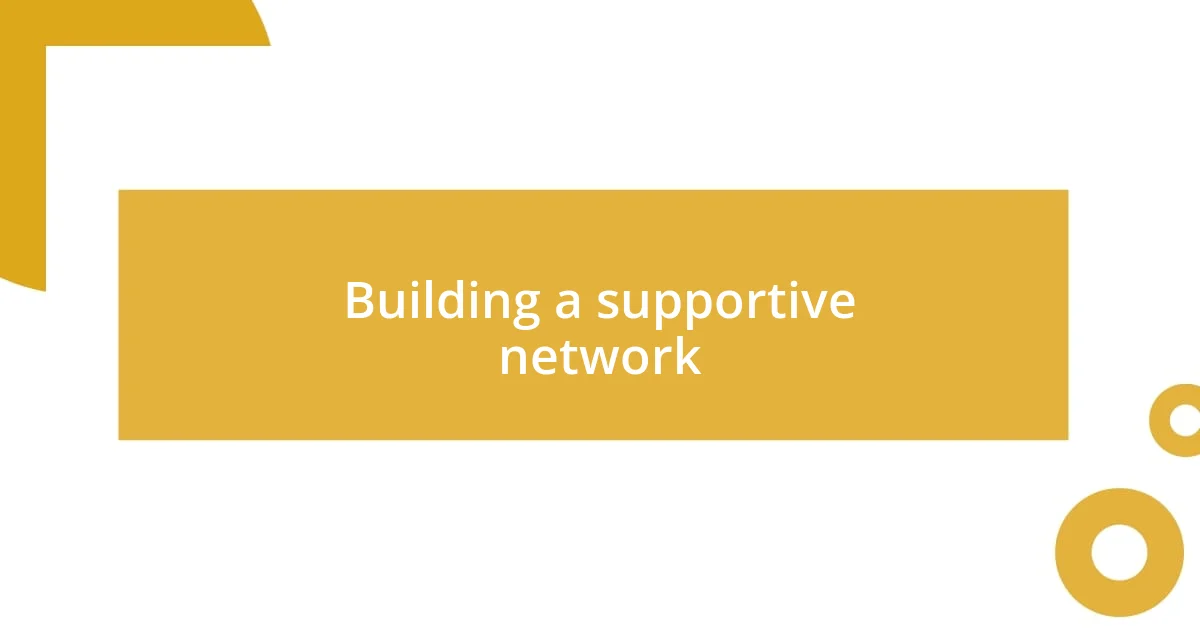
Building a supportive network
Building a supportive network is crucial for navigating the complexities of flashbacks. I’ll never forget when a close friend reached out during one of my toughest nights. Just having someone text me, “I’m here if you need to talk,” felt like a lifeline. It reminded me that I wasn’t alone in my struggles. Have you ever felt that simple acknowledgment wash over you like a warm blanket? It can be incredibly comforting to know that others are willing to walk alongside us.
Creating this network doesn’t always mean engaging in deep conversations; sometimes, it’s about sharing light-hearted moments that pull you out of a dark place. I often join a local support group where we share our experiences over coffee. It’s a casual setting, but the genuine support exchanged is profound. The laughter we share while navigating our stories adds a level of understanding that’s hard to find elsewhere. How impactful is it to laugh with others who truly get what you’re going through? It’s a reminder that life can still be joyful amidst the struggles.
It’s also essential to reach out proactively and strengthen these connections. I started texting family members or friends just to check in or share something uplifting, even on days when I didn’t feel like talking about my flashbacks. I’ve noticed how these small gestures can pave the way for deeper conversations when I need them most. Isn’t it remarkable how our relationships can blossom through consistent effort? Building this network is not just about having people around; it’s about cultivating genuine connections that uplift and empower us in our healing journeys.











